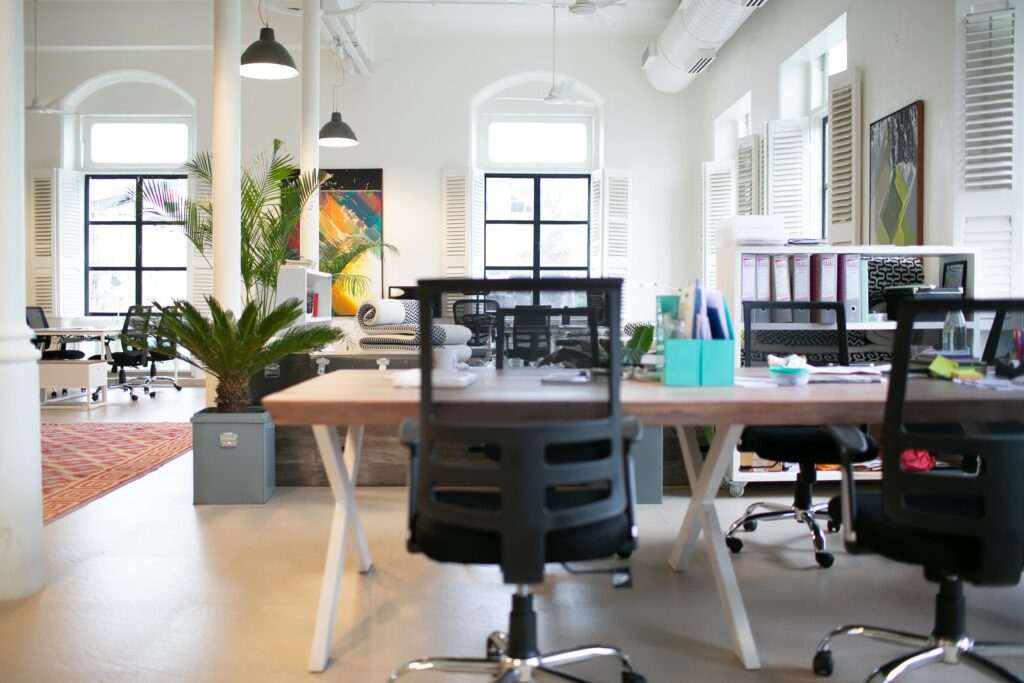The pandemic and now the rising cost of energy have put a bright spotlight on the inefficiencies of office space. For years, businesses have been paying for office space that is often underutilised. The average occupancy level before the pandemic was between 40% and 60%.
Now that companies have realised that many of their employees can work from home and without having to go into the workplace, learning how businesses can better utilise office space and manage their energy costs has become a top priority.
This is especially so since the average occupancy level has dropped even more with people working from home.
This leads to two problems: businesses are wasting even more money on office space that is sitting empty, and employees are not getting the benefits of working in an office environment.
In this article, we look at how the pandemic has exacerbated the inefficiencies of office space and explore how businesses can better use their office space going forward.
The Cost of a Desk Per Year
As businesses have reopened their offices, it is essential to take stock of the situation and ensure they are not wasting money on inefficient office space. One way to appreciate the opportunity is by looking at the cost of desks per year.
The average cost of a desk in an office is between £5k and £16k, depending on location. This is a high cost for any business, and it is essential to ensure that this space is used efficiently.
Optimising is the name of the game when it comes to office space. Unfortunately, not all office spaces are organised or managed to maintain effective use of the space, as the business demands that drive space requirements are not always verified regularly.
Another problem is that many organisations don’t know how much space they use daily. This leads to wasted space and inefficient utilisation of resources.
Cutting Overhead in Tough Times
When the economy is on a dive and business is bad, one of the first things organisations look at is their overheads. Unused office space is not always considered a way to save money as it can take time to remove it from the portfolio, which can lead to an unneeded expense. At the same time, this overhead can be a significant amount of money for some businesses, and it may make sense to downsize the office space to cut this expense.
The goal is to save money by rightsizing while maintaining enough room for employees to do their jobs effectively.
Despite many realising they are bleeding money, many companies are not fully aware of how to make their office space more efficient.
Employees Are Not Getting The Benefits Of Working In An Office Environment
Many employees find that they are more productive in an office setting. This is because they have access to resources, can collaborate with co-workers (knowledge sharing), and are less isolated.
There is also the argument that working from home (where a suitable work environment exists) provides the focus needed to complete tasks effectively, without distraction.
To maintain productivity levels, businesses need to provide their employees with the resources they need and flexibility to be successful, whether they are working from home or in the office.
The Solution
Now that we know the problem, the question that arises is, “what is the solution?”
It’s Time to Invest in Managing Your Asset
Asset management is the key to ensuring that your office space is used efficiently. The cost to monitor your asset is less than 1% of your total cost of occupancy (TCO) per year, so there is no reason not to do it. Why wouldn’t you invest 1% to save more than 30%?
Imagine the savings you could make by monitoring your office space continually and ensuring that things are being done as they should be.
Access the Correct Data
From the desk status in your organisation to the occupancy profile, and even the environment your people work in (anything from CO2, temperature, humidity, and noise), you need to be able to access the right data to make the necessary changes.
Most business owners don’t even realise they can factor these items into their decision-making process, but the good news is that they can.
Knowing what space utilisation looks like in your organisation is the first step to improving it.
Spaceology’s key tips
Portfolio Health Check
It is essential to understand your office space’s current state and identify areas that could be improved.
A portfolio health check involves an assessment of seven key data points which you should have to hand, e.g. headcount, desk count etc. This will help identify areas of your office that are under-utilised or could be used more efficiently and targeting spend for the biggest return.
Occupancy Measurement
Occupancy measurement is all about understanding how your space is being used. It’s a way of managing your assets to make informed decisions about the future.
The most important thing is accurate data collection.
Some of the things that you might want to measure include:
- The number of people coming into the building/floor versus the capacity of the building/floor
- The number of people using each desk daily and the time desks sit empty
- The number of people using meeting rooms versus the capacity of the room
Key Takeaways
With such a vast amount of wasted office space in organisations globally, many businesses are struggling. This wasted space has a high cost for any business, and many organisations don’t have complete information about their office space usage.
Businesses such as Uber, UCL, Brookfield GIS, and the Royal Borough of Kensington and Chelsea have all invested in sensor technology to help them to improve their space utilisation and make informed decisions about the future.
You can look at these case studies to see how they improved their space utilisation.

